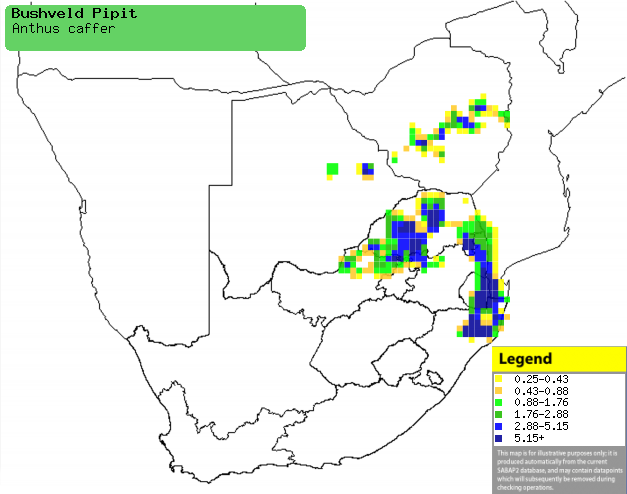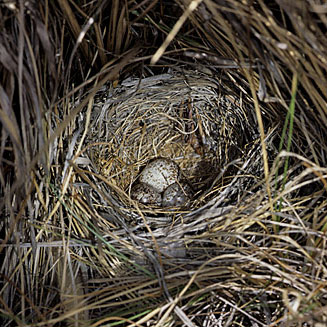|
Anthus caffer (Bushveld pipit)
Bosveldkoester [Afrikaans]; Savanne-pieper [Dutch]; Pipit
des arbres [French]; Buschpieper [German]; Petinha-do-mato [Portuguese]
Life
> Eukaryotes >
Opisthokonta
> Metazoa (animals) >
Bilateria >
Deuterostomia > Chordata >
Craniata > Vertebrata (vertebrates) > Gnathostomata (jawed
vertebrates) > Teleostomi (teleost fish) > Osteichthyes (bony fish) > Class:
Sarcopterygii (lobe-finned
fish) > Stegocephalia (terrestrial
vertebrates) > Tetrapoda
(four-legged vertebrates) > Reptiliomorpha > Amniota >
Reptilia (reptiles) >
Romeriida > Diapsida > Archosauromorpha > Archosauria >
Dinosauria
(dinosaurs) > Saurischia > Theropoda (bipedal predatory dinosaurs) >
Coelurosauria > Maniraptora > Aves
(birds) > Order: Passeriformes
> Family: Motacillidae > Genus: Anthus
Distribution and habitat
Occurs in patches from Ethiopia through Tanzania to Malawi,
Zambia and southern Africa. Here it is locally common in central Zimbabwe,
eastern Botswana and north-eastern South Africa, generally preferring open
woodland with sparse undergrowth and edges of miombo (Brachystegia)
woodland.
|
 |
|
Distribution of Bushveld pipit in southern Africa,
based on statistical smoothing of the records from first SA Bird Atlas
Project (©
Animal Demography unit, University of
Cape Town; smoothing by Birgit Erni and Francesca Little). Colours range
from dark blue (most common) through to yellow (least common).
See here for the latest distribution
from the SABAP2. |
Food
It mainly eats insects, doing most of its foraging on the
ground, gleaning food from grass and leaf litter and often joining mixed-species
foraging flocks.
Breeding
- The nest (see image below) is a small, thick-walled cup made of dry grass
and lined with finer grass stems and rootlets, typically placed in a hollow
at the base of a dense grass tuft.
 |
|
|
Bushveld pipit nest with eggs, Nylsvley area,
South Africa. [photo Warwick Tarboton ©] |
|
- Egg-laying season is from October-March, peaking from November-February.
- It lays 2-3 eggs, which are incubated for at least 14 days.
Threats
Not threatened.
References
-
Hockey PAR, Dean WRJ and Ryan PG 2005. Roberts
- Birds of southern Africa, VIIth ed. The Trustees of the John Voelcker
Bird Book Fund, Cape Town.
|
